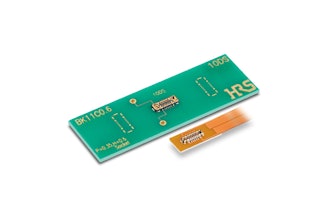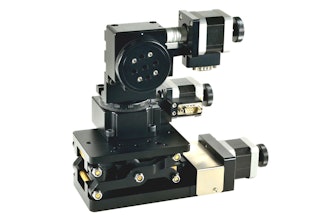
Supplying Occupational Safety and Health Administration (OSHA) documentation or equipment inspection records at a moment’s notice is now as easy as grabbing a phone for Jarod Fornes, Safety Coordinator and Construction Manager of Environmental Safety and Health Programs for the commercial construction company Clancy & Theys in Wilmington, North Carolina.
Fornes is responsible for ensuring the company’s subcontractors and trade partners are performing to OSHA standards and following company safety policies. This means walking the site and tracking multiple pieces of heavy equipment and the activities of hundreds of workers. It also means, as he puts it, “filing a ton of paperwork” to document and demonstrate to OSHA that Clancy & Theys has an active safety plan.
But filing health and safety paperwork is only half the task. Fornes must also produce specific documents on demand during onsite OSHA inspections, as well as for his own operational needs. This is a daunting organizational task for even the most meticulous individuals, as documentation includes everything from safety training records for each worker and notes on “toolbox talks” to machine inspections, safety audits and weekly site inspections.
One type of documentation about which Fornes was particularly concerned was site-specific safety inspection orientation. Whenever new workers are assigned to a jobsite, they are required to complete training about jobsite safety rules before they can begin working. After participating in the training, workers add a sticker to their hardhats to indicate their orientation is complete.
“The sticker provided at-a-glance verification,” explains Fornes, “but it had nothing else associated with it—no name, no registration, no other information.”
That led him to seek a better solution for tracking individual records.
 Shurtape
Shurtape
“We looked at options like QR codes,” Fornes explains. “But the problem with QR codes is that they have to be printed in advance, and once they’re printed, you can’t change the information that’s attached to the code. They just couldn’t do what we needed them to do.”
After talking about his safety orientation tracking problem with others in the industry, a friend recommended trying a new product called BR Code Scannable Solutions from Duck Pro by Shurtape brand. BR Code is an innovative scannable tape and label product that allows users to link digital information to a specific object and location using a free, easy-to-use mobile app called BitRip. Fornes explored the duct tape product online, then took the idea to his boss, who agreed they should give BR Code a try.
Fornes started testing the tape about a year ago on the site of The Metropolitan at the Riverwalk project, where about 80 workers and half a dozen pieces of heavy equipment were active daily. He began by sticking a piece of BR Code™ scannable tape to each crew member’s hardhat after they completed the safety orientation. He then used the BitRip app to capture each code and attach the worker’s name to it. He also linked the code to other information, such as additional training they had already completed, specific safety certifications they held and equipment they were authorized to operate. All the linked information was then accessible to anyone with a mobile device and the app.
The BR Code scannable tape and BitRip app worked so quickly and easily that Fornes soon started using them to track jobsite equipment. Now, he sticks a piece of BR Code™ scannable tape to forklifts, aerial lifts, bulldozers, excavators and other site equipment to track safety inspections, maintenance records and operating instructions. Fornes was so pleased with the results that he posted an example on LinkedIn of how he used the tape and app to track a crane’s certification of crane operators license, lift plan, inspections, model photos and operator’s manual.
 Shurtape
Shurtape
While Fornes initially planned to use the BR Code scannable tape to track safety training for personnel and manage records for equipment, he later realized it also offers the benefit of built-in liability protection. For example, if he observes a worker operating a piece of equipment they haven’t been trained to use, he can use the code on their hardhat to verify their training and attach a note about the safety violation to the code if needed. Each newly logged record automatically generates a date, time and geo location stamp that becomes discoverable for reference in the event of a safety-related lawsuit.
“It seems so basic, but once you start using it, it’s a different ballgame,” says Fornes.






















